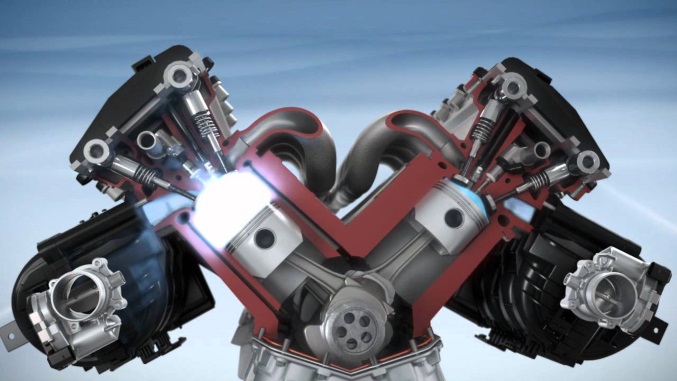
“Cylinder Deactivation” is a gas saving technology that has been known for decades and has been used many times with varying degrees of success. Conceptually it is simple. Let’s say you have an 8 cylinder engine. With cylinder deactivation technology, you use all eight cylinders when full power is needed (passing ) and “deactivate” half of them so only 4 are needed (cruising). The service technicians at www.hoffmangm.com helped explain to us the how it works:
In typical light load driving with large displacement engines, only about 30 percent of an engine’s potential power is used. This is because under these circumstances, the throttle valve is only slightly open and the engine has to work hard to draw air through it. The result is an inefficient condition known as “pumping loss”. Pumping losses occur because some of the power that the engine makes is used to overcome the drag on the pistons from fighting to draw air through the small opening into the engine. Deactivating cylinders under light load forces the throttle valve be opened more fully to create constant power and allows the engine to breathe easier. Better airflow reduces associated pumping losses.
How do they do this?
In a nutshell, cylinder deactivation is simply shutting off the intake and exhaust valves for a particular set of cylinders in the engine. Typically valve actuation is controlled by using solenoids to change the oil pressure to the lifters. In conjuction with this, fuel delivery for each deactivated cylinder is cut-off by electronically disabling the appropriate fuel injection nozzles. The transition between normal operation and deactivation is smoothed by subtle changes in ignition and camshaft timing as well as throttle position all managed by the car’s engine control module. In a well-designed and executed system, the switching back-and-forth between both modes is so seamless that the driver is unaware that anything is occurring.
Cylinder deactivation has been only used on a handful of car models over the years. In the early 80s, Cadillac had a cylinder deactivation technology that could disable 2 to 4 cylinders of their V8 engine. In the early, 2000s, DaimlerChrysler introduced their Multi-Displacement (MDS) system and today Honda offers their Variable Cylinder Management (VCM) system on select models.
The process is a good one and it saves gas. We may see more iterations of it offered in the future.
Thanks to: Hoffman GM
Previous article
How to Cut Your Car Expenses, Part One